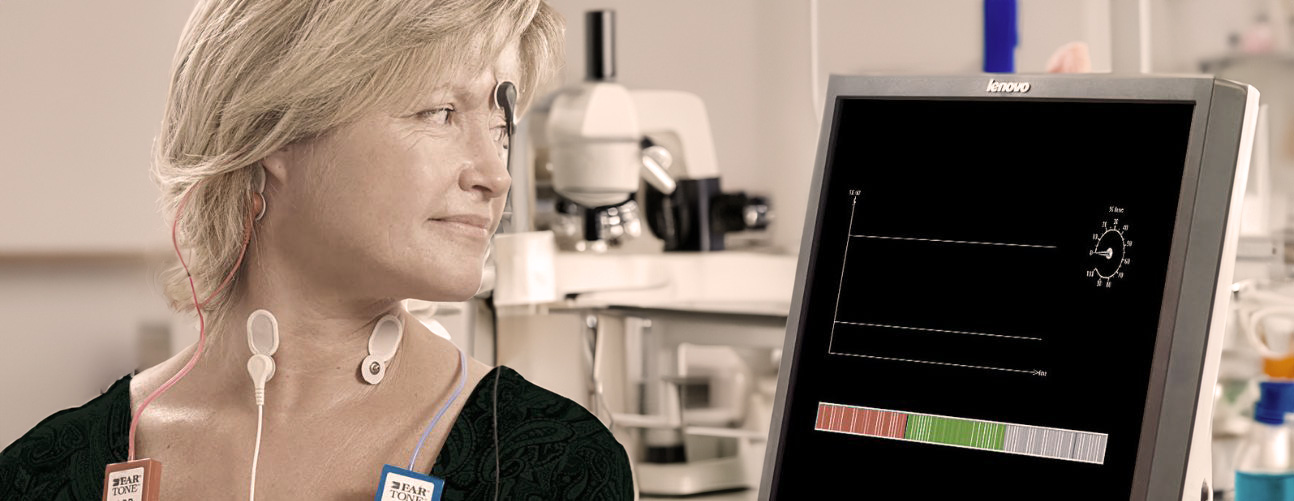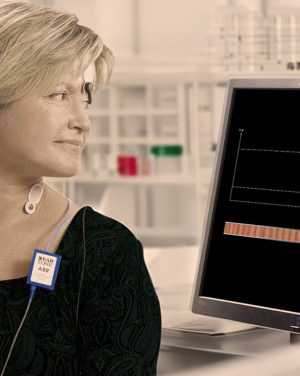

Otolithic evoked potentials
Otolithic evoked potentials are used to assess the function of the saccular and utricular sensors of the vestibule, the part of the inner ear dedicated to analysing the acceleration of the head in the vertical and horizontal planes, i.e. in relation to the earth’s gravity. It is thanks to the information they provide to the balance system that we can determine with great precision the position of our body or objects in relation to the vertical (direction of the gravity vector).
The test is performed by stimulating these sensors with high-intensity sounds. These sounds are emitted by means of an earpiece in the ear under examination and the reflex muscle contractions triggered in the cervical muscles for the saccular sensor (cervical VEMP) and in the ocular muscles for the utricular sensor (ocular VEMP) are collected.


Examination of otolithic evoked potentials
The analysis of the functioning of these two sensors is a useful complement to the evaluation of the semicircular canals, which provide information on the angular acceleration of the head in the three planes of space.
It should be noted that we have other tests available to assess the function of the otoliths, which we perform if necessary :
- The subjective vertical visual test.
- Counter-rotational eye movement analysis.
This test provides valuable information in the search for a third vestibular window (such as MINOR syndrome), but also in the assessment of vestibular function and topographical diagnosis of its impairment.
It is part of our systematic assessment of vestibular function when investigating vertigo or balance disorders, together with video-nystagmography, VHIT and, if necessary, other tests. (Dynamic visual acuity, video-oculography, stabilometry).
